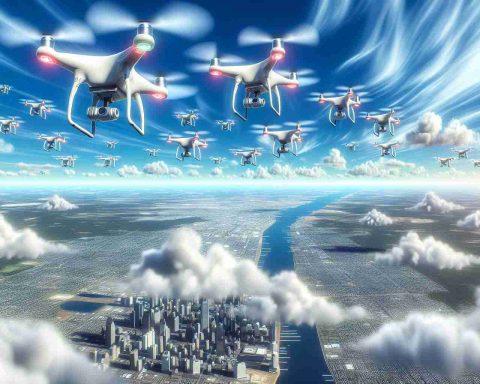The vastness of space is currently filled with approximately 13,000 satellites, racing around Earth at astonishing speeds of 6 miles (10 kilometers) per second. While this technological achievement showcases human ingenuity, it also presents a dangerous dilemma: space debris.
The phenomenon known as Kessler Syndrome illustrates this predicament. This theory suggests that an overabundance of satellites increases collision risks, leading to more debris in an unending cycle. Originating from the thoughts of American astrophysicist Don Kessler in the 1970s, this concept has become increasingly relevant as our low Earth orbit (LEO) fills with both active and inactive satellites—over 10,000 active and around 3,000 defunct as reported by the European Space Agency.
With major players like SpaceX launching thousands of new satellites—more than 6,800 from their Starlink initiative alone—the issue worsens. Reports indicate that we now launch satellites at an average rate exceeding 12 per week. These surges, paired with millions of naturally occurring micrometeoroids, create a dangerously crowded celestial environment.
The dangers are stark; even a tiny piece of debris can cause catastrophic damage due to the high speeds involved. To combat this escalating problem, experts advocate for a circular space economy emphasizing reusable technologies and responsible disposal methods. Agencies are also proactively launching initiatives aimed at reducing space junk and curtailing future debris production, all while racing against time to avert a potential space crisis.
The Looming Crisis: How Space Debris Threatens the Future of Satellites
The State of Our Orbital Environment
As of 2023, the Earth’s orbit is a bustling hub, populated by approximately 13,000 satellites. These incredible feats of technology orbit our planet at speeds of around 6 miles (10 kilometers) per second. Yet, this space race introduces a critical issue—space debris—that poses a significant threat to both current and future satellite missions.
Understanding Kessler Syndrome
The phenomenon known as Kessler Syndrome, introduced by American astrophysicist Don Kessler in the 1970s, paints a grim picture of our orbital future. This theory proposes that as the number of satellites increases, so does the likelihood of collisions, which further generates debris. With over 10,000 active satellites and around 3,000 defunct ones, according to the European Space Agency, the situation continues to worsen.
The Growth of Satellite Deployment
The scale of satellite deployment is staggering. Companies like SpaceX have dramatically increased the number of satellites in orbit, with more than 6,800 launched under their Starlink initiative alone. We are now witnessing an average launch rate exceeding 12 satellites per week—a trend that not only complicates satellite management but also heightens the risk of collateral damage from collisions.
The Risks of Space Debris
The consequences of failing to manage space debris are severe. Even small fragments can wreak havoc, as they travel at such extraordinary speeds that they can cause catastrophic damage to operational satellites. This has led to increasing calls for action among space agencies and private sector players alike.
Innovative Solutions for a Sustainable Orbital Environment
The need for a sustainable approach to orbital operations is urgent. Experts are advocating for a circular space economy, which emphasizes:
– Reusable Technologies: Innovations that allow for satellites to be refurbished and reused significantly reduce waste.
– Responsible Disposal: Methods for the safe removal of defunct satellites are critical to keeping our orbits clear.
– Collision Avoidance Systems: Developing predictive systems that help avoid potential collisions can mitigate risks before they occur.
Future Initiatives and Proactive Measures
Agencies worldwide are launching initiatives designed to address the growing problem of space debris. For instance, projects like the European Space Agency’s ClearSpace-1 aim for active debris removal, targeting larger fragments that pose significant risks. Moreover, the growing investment in space traffic management systems by various countries will play a crucial role in tracking and managing satellite movements.
Conclusion: A Race Against Time
As we push forward into a future reliant on satellite technology—from communications to climate monitoring—the threats posed by space debris must be carefully managed. By embracing innovative solutions and responsible practices, we can safeguard our orbital environment and ensure the continued benefits of these technologies.
For more information on the latest trends and developments in space technology, visit NASA and European Space Agency.











